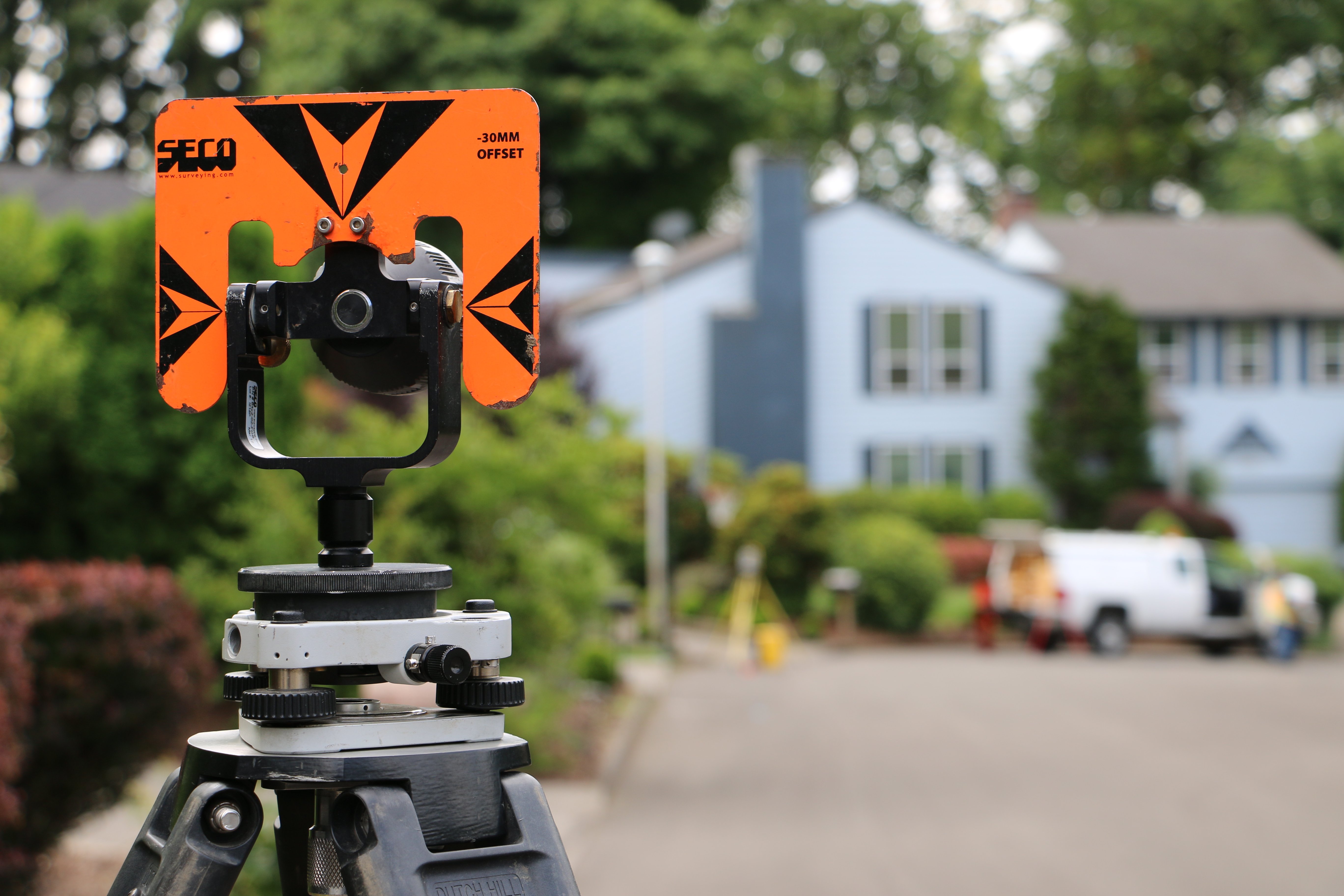
A few months back, a friend of mine was considering a job as a Survey Instrument Person, but he wasn’t familiar with the profession. I explained it the simplest way I know how. As an engineer, I work in a digital world of models and drawings, and land surveying is my connection to reality. Surveyors perform topographic surveys, which serve as the basis of my digital world. After I’ve completed the design work, the surveyors convert my design into physical points they return to the real world in the form of stakes in the ground. Every engineered design is completely dependent on competent surveyors. This reality is the reason having civil and survey under one roof is such a benefit to our projects and clients.
Since engineers work in a digital world, their design is only as good as the topographic survey they’re provided. With in-house survey, I’m able to visit the site, identify critical features, and directly communicate with our field crews on a regular basis. We can discuss any surprises in the topo and even revisit the site together to ensure our digital representation is correct.
When the design is complete and the plans are approved, I depend on surveyors to translate my digital design back into the real world. Working with in-house survey means they know exactly how to read our plans. Familiarity helps avoid misinterpretation. Our surveyors have direct access to our drawings and plans, as well as the advantage of walking into the engineer’s office if/when clarification is needed. The end result is more efficient and accurate construction staking.
One of the biggest advantages to hiring consultants with survey and civil in-house is that it eliminates the finger pointing that can occur if something goes wrong during construction. Mike Tyson famously said, “Everybody has a plan until they get punched in the mouth.” Similarly, every engineer has a plan until the contractor breaks ground. This is particularly true with earthwork where an engineer’s precision surface meets the blade of a scraper. Getting the topographic survey, design, staking, and asbuilt topo all from the same shop eliminates finger pointing between these groups.
Honestly, working in digital models can be a bit uncomfortable. Engineers have to trust the model to accurately portray the site. Similarly, surveying can be a bit uncomfortable, too, as they pound a stake into the ground they must trust the catch basin will eventually line up with the curb. When trust is a key component to project success, all parties benefit from the civil and survey staff being from the same shop.
-1.jpeg?width=3264&name=IMG_20190619_080812%20(1)-1.jpeg)
One more thought in closing. That friend of mine decided to give survey a try, and he’s been with us for five months now. He’s a sharp guy who didn’t want to be stuck at a desk, but was looking for a job that could turn into a career. If you know someone who fits that description, you should encourage them to find out more about a career in land surveying. We’re always looking for good people who will work hard and be open to learning a new skill set!
I’d love to hear your thoughts. What is your experience working with consultants offering civil engineering and land surveying? What about when these services are separate? Email me at psmith@mackaysposito.com to share your experiences.


Leave us a comment below